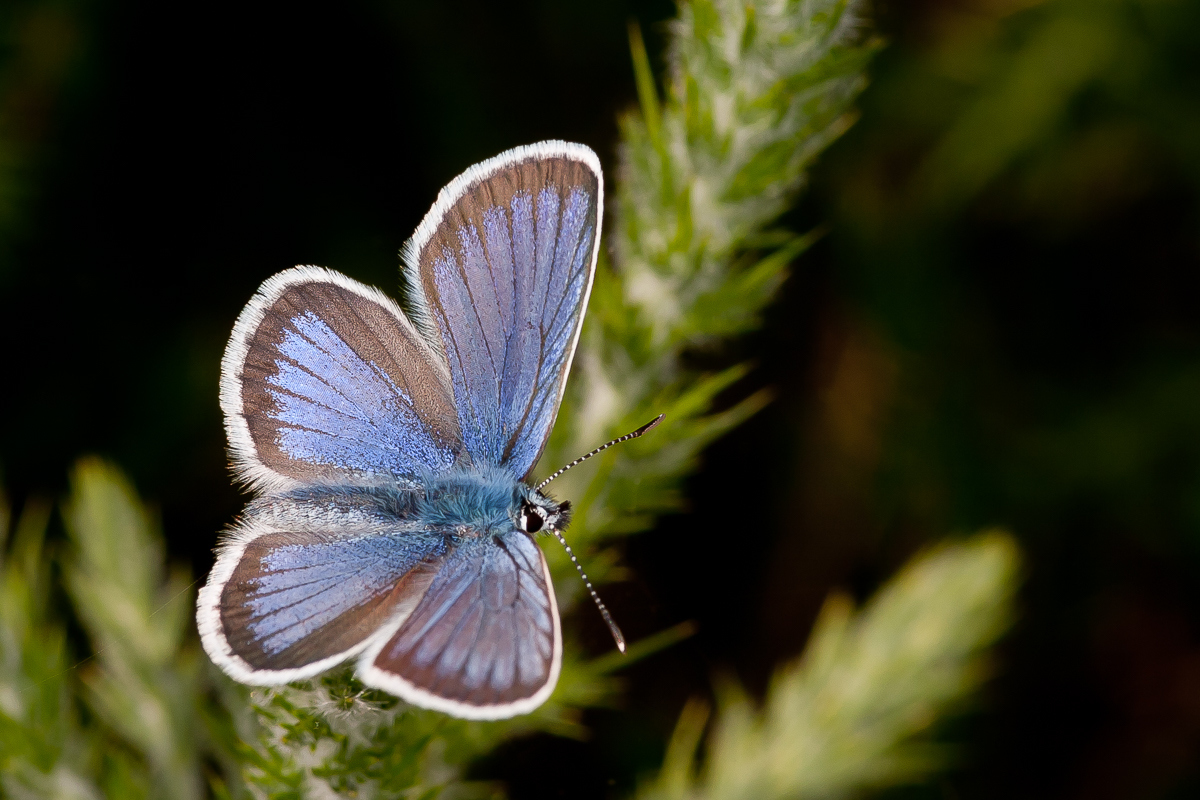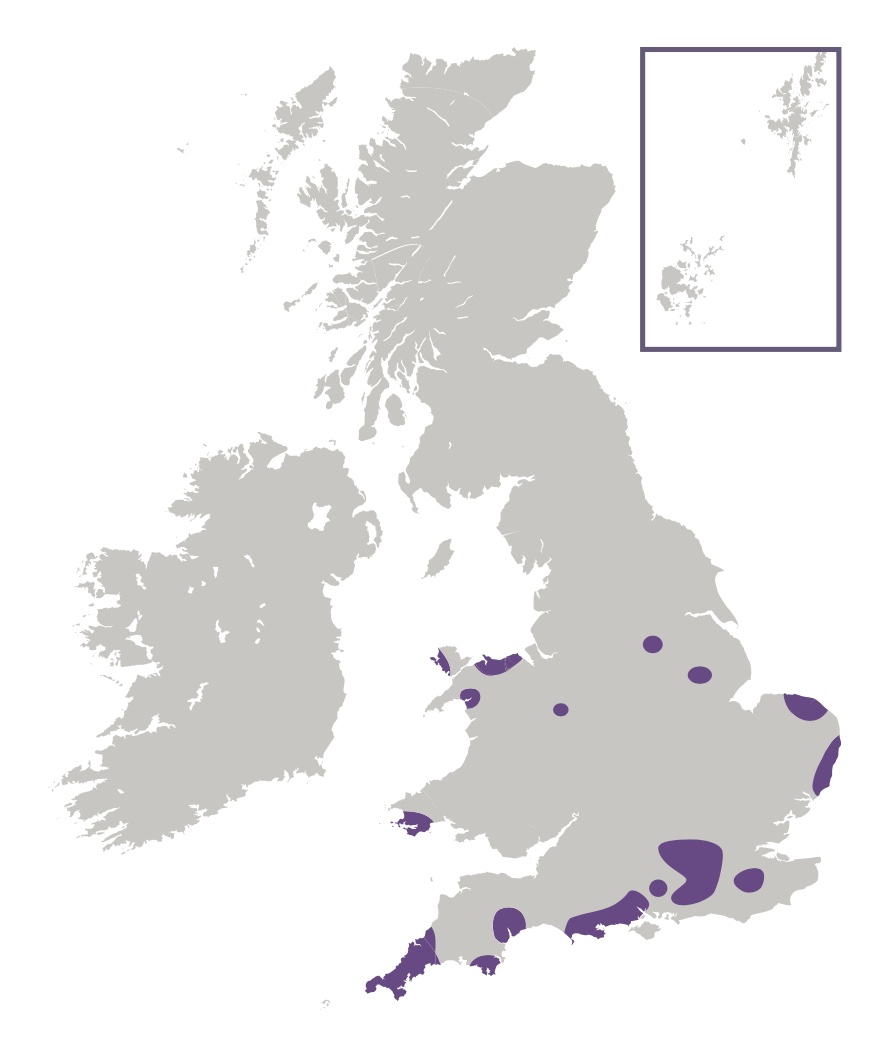
Photo © Peter Eeles
The Silver-studded Blue gets its name from the light blue reflective scales found on the underside of most adults and which are quite visible when light reflects off them. As with many other species of blue, the males are blue while the female is a less-conspicuous brown. However, this butterfly is highly variable in appearance and, as stated in Dennis (1977), variation extends to "differences in the male upperside coloration, the width of the marginal border (wide in the New Forest, narrow in Devonshire) and the underside grey coloration (dull grey in the New Forest, silvery grey in east Suffolk); in the female to the development of the blue coloration and the orange lunules on the upperside, and on the underside to the coloration, the width and prominence of the medial white band".
Both Worms (1949) and Thomas (1999) provide an analysis of many populations found in the British Isles, all of which are considered to belong to the nominate subspecies by default, despite apparent differences in appearance. This includes populations found on mossland at Llyn Hafod-y-llyn in north Wales, on limestone at Portland Bill in Dorset, at Holy Island off Anglesey, at Prees Heath in Shropshire, and on the sand dunes of south-west England.
This delightful butterfly is found in close-knit colonies, with individuals rarely flying any distance. Most colonies contain less than a thousand adults. However, a few colonies are huge, with the number of adults measured in tens of thousands, providing an amazing spectacle. Most colonies of this species are found in southern England, although there are several other notable colonies in the east of England and Wales. With the exception of a single site at Prees Heath in Shropshire, this butterfly is absent from central and northern England, Scotland, Ireland and the Isle of Man.
As for the larva and pupa, newly-emerged adults are also often attended by ants which offer them some protection from predators. Unlike many other species, this blue will fly in overcast weather, so long as the temperature is sufficiently high. The adults roost communally and this can provide a wonderful sight first thing in the morning, as the adults open their wings to catch the heat from the sun's rays. Males can be observed flying low over vegetation, searching out females, which are mated very soon after emergence. Neither sex spends much time visiting flowers to nectar but, when they do, Bell Heather is a favourite nectar source.

This species is typically found on heathland that has not become too overgrown. It is also found on both limestone and chalk grassland and was formerly found in upland mosses. This species is a warmth-loving butterfly and, as such, is often found in sheltered areas, or those that are south-facing.
Adults feed primarily on Bell Heather (Erica cinerea), brambles (Rubus spp.) and Common Bird's-foot-trefoil (Lotus corniculatus).
The primary larval foodplants are Black Medick (Medicago lupulina), Common Bird's-foot-trefoil (Lotus corniculatus), Common Rock-rose (Helianthemum nummularium), Gorse (Ulex europaeus), heathers (Calluna and Erica spp.), Hoary Rock-rose (Helianthemum oelandicum) and Horseshoe Vetch (Hippocrepis comosa).
